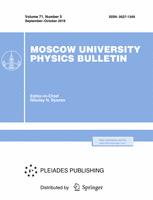Features of the behavior of long vertically distributed receiving systems (VDRSs) for use in the low-frequency tomography of the ocean are considered. In the most common design variant, VDRSs are structures that consist of a cable rope of up to several hundreds of meters in length with receiving modules placed coaxially (hydrophones) or axis-perpendicularly (accelerometers) on it, a buoy, and an anchor, which support the predetermined spatial position of the system. The results of the experiments carried out using VDRSs of 32 and 128 m in the White Sea are discussed. Underwater-current forces on a VDRS result in vibrations on system elements, especially on the cable-rope, which are transmitted to hydrophones and are responsible for the formation of a pseudo sound signal at frequencies below 10–12 Hz that, under certain conditions, can considerably exceed the background noise level of the water area. These facts may considerably reduce the efficiency of a VDRS and limit the frequency range of measurements from the bottom. The similarity of the results obtained by different experiments suggests that there is a general mechanism for the occurrence of vibrations and pseudo sound. The definition of such a mechanism can point the way to eliminating these undesirable effects and extending the frequency range of a VDRS into the infrasonic range.
43.28.Tc Sound-in-air measurements, methods and instrumentation for location, navigation, altimetry, and sound ranging
43.58.Fm Sound level meters, level recorders, sound pressure, particle velocity, and sound intensity measurements, meters, and controllers
$^1$Department of Physics, Moscow State University, Moscow, 119991, Russia
$^2$All-Russia Scientific Research Institute for Physical-Technical and Radiotechnical Measurements (VNIIFTRI), Mendeleevo, Moscow oblast, 141570, Russia



